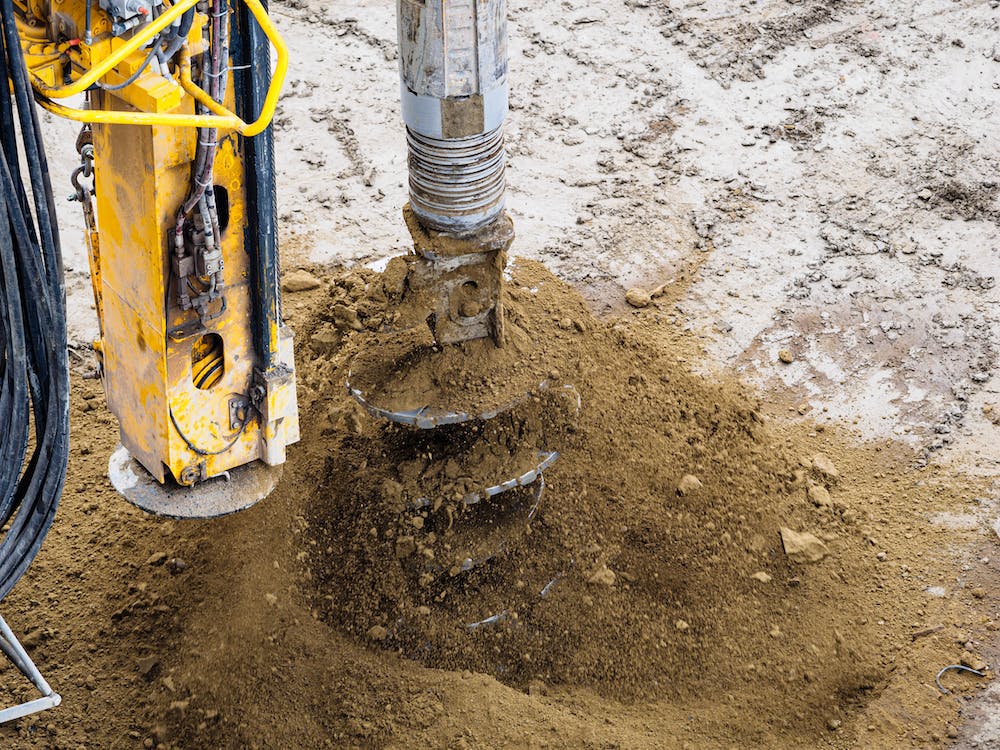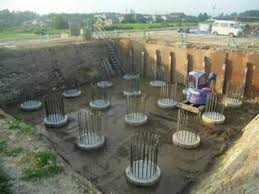Geotechnical Engineer Description: What to Anticipate from These Specialists
Wiki Article
The Importance of Geotechnical Design in Resolving Environmental Difficulties and Enhancing Building Safety And Security
Geotechnical design offers as a cornerstone in the intersection of environmental stewardship and building security, supplying vital insights right into the habits of soil and rock under numerous conditions. By executing calculated website investigations and tailored reduction steps, geotechnical designers play a vital duty in guarding both human lives and ecological integrity.
Duty of Geotechnical Design
Geotechnical design plays an important function in the design and construction of facilities by resolving the behavior of dirt and rock materials under different conditions. This area of design is essential for understanding the interaction in between frameworks and the ground, that includes figuring out the load-bearing ability of soil, analyzing stability, and predicting prospective settlement or failure.Geotechnical designers are accountable for conducting site investigations, which entail tasting and screening dirt and rock to collect data on their chemical and physical residential properties. This info is crucial for creating foundations, preserving walls, and other earth-retaining structures that make sure security and durability. Geotechnical design informs the choice of ideal building and construction approaches and products, thereby reducing threats associated with dirt actions.
Additionally, the combination of geotechnical engineering principles right into metropolitan preparation and environmental management is vital for addressing difficulties such as ground contamination and groundwater administration. By comprehending geotechnical elements, engineers can create lasting options that boost the strength of facilities versus all-natural dangers, while also promoting environmental stewardship. Inevitably, the duty of geotechnical engineering is important for accomplishing risk-free, durable, and environmentally aware building and construction methods.
Dirt Disintegration Mitigation
Soil disintegration poses a substantial hazard to both ecological stability and infrastructure honesty, affecting approximately 24 billion lots of productive soil shed annually worldwide. This sensation is exacerbated by elements such as deforestation, urbanization, and inadequate farming techniques. Geotechnical engineering plays a crucial function in establishing efficient soil disintegration reduction techniques that protect both the environment and construction tasks.One approach requires the implementation of disintegration control methods such as vegetation growing, which stabilizes soil via root systems. Furthermore, the building of preserving balconies and walls can successfully minimize surface area drainage and safeguard at risk areas from disintegration. Proper water drainage layout is additionally critical; it minimizes water accumulation and routes excess runoff away from vital structures.
Moreover, geotechnical designers employ soil stabilization techniques, such as the application of geotextiles and biodegradable floor coverings, to improve dirt cohesion and stop destruction - all about geotechnical engineering. Normal surveillance and evaluation of erosion-prone sites make it possible for prompt treatments, ensuring lasting sustainability. By integrating these techniques, geotechnical engineering not only reduces the impacts of soil erosion yet additionally contributes to the resilience of facilities versus ecological difficulties, eventually promoting a safer and a lot more sustainable developed setting
Groundwater Security Methods
Groundwater acts as an important resource for drinking water, farming, and commercial procedures, making its protection essential for environmental sustainability and public health and wellness. Reliable groundwater security approaches are vital in reducing contamination threats and guaranteeing the longevity of this resource.
Regular tracking of groundwater quality is additionally vital, allowing very early detection of contamination resources and facilitating timely remediation initiatives. Utilizing innovative innovations, such as geophysical studies and remote picking up, help in recognizing prospective risks to groundwater reserves.
Moreover, public education and learning and stakeholder engagement are critical, fostering area support for groundwater protection straight from the source campaigns. geotechnical specialist. By integrating governing measures, technical innovations, and neighborhood involvement, we can develop a thorough framework that safeguards groundwater sources while advertising lasting development and building and construction methods
Landslide Threat Administration
Landslides position significant hazards to both human security and facilities, making effective danger administration techniques necessary. Geotechnical design plays an essential function in determining, evaluating, and mitigating landslide risks. An extensive understanding of slope stability, soil technicians, and hydrology is essential for establishing effective risk management plans.The primary step in landslide danger administration entails complete website investigations, which consist of geological mapping and soil screening. These investigations help engineers examine the capacity for landslides by identifying crucial elements such as incline angles, soil structure, and water web content. Utilizing advanced technologies such as remote noticing and geophysical studies can enhance his response the precision of these assessments.
Once dangers are recognized, ideal reduction actions can be implemented. These may consist of engineering options such as preserving walls, drainage systems, and incline stabilization methods. Keeping an eye on systems must be developed to find indicators of ground movement and changes in water degrees, enabling for aggressive interventions.

Enhancing Building And Construction Security
Construction websites typically present a myriad of risks that can endanger employee security and project stability. Geotechnical engineering plays a critical function in improving construction safety by offering necessary insights right into subsurface problems. Via detailed dirt and rock evaluation, geotechnical engineers can identify potential threats, such as soil instability, groundwater issues, and seismic susceptabilities, which may compromise the safety and security of construction activities.Applying geotechnical services, such as proper structure layout and the usage of retaining frameworks, mitigates these dangers significantly. These remedies not only make certain the stability of the structures being developed however additionally create a more secure working atmosphere for building and construction workers.
Furthermore, cultivating a culture of safety and security with training and adherence to developed safety and security protocols further improves construction site security. By integrating geotechnical proficiency right into the preparation and implementation stages, building and construction projects can accomplish greater security criteria, inevitably safeguarding employees and making certain successful project conclusion.
Final Thought
In final thought, geotechnical engineering serves as a crucial self-control in taking on environmental challenges and promoting building safety and security. Via efficient dirt erosion reduction, groundwater defense strategies, and landslide threat management, geotechnical engineers add to the advancement of durable framework.Geotechnical design offers as a keystone in the junction of ecological stewardship and building and construction security, supplying essential insights into the actions of soil and rock under various problems. Geotechnical engineering educates the option of ideal construction approaches and products, thereby reducing threats connected with soil habits.
Geotechnical engineering YOURURL.com plays a critical function in creating effective soil disintegration reduction strategies that guard both the setting and construction jobs.
Additionally, geotechnical engineers utilize dirt stablizing methods, such as the application of geotextiles and eco-friendly mats, to enhance dirt communication and stop destruction. Through thorough soil and rock analysis, geotechnical engineers can determine prospective risks, such as dirt instability, groundwater problems, and seismic susceptabilities, which may jeopardize the safety of building tasks.
Report this wiki page